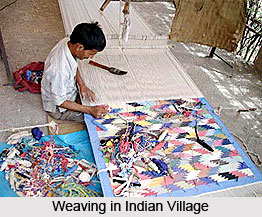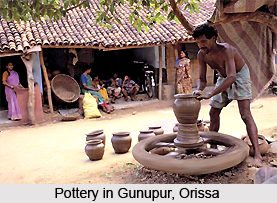 Indian Village Societies are combined of people following different religious paths and traditions. The formation of the Indian Village society largely varies from one region to another. Though there is some similarity in the religious practices and cultural activities in most Indian village societies, their education system or the position of women differ from each other.
Indian Village Societies are combined of people following different religious paths and traditions. The formation of the Indian Village society largely varies from one region to another. Though there is some similarity in the religious practices and cultural activities in most Indian village societies, their education system or the position of women differ from each other.
Religious Customs of Indian Villages
The religious customs and practices in Indian Village society vary in different parts of the country, depending upon their cultures and lifestyles. Most of the village societies in India have a Gram Devata or a village deity and consider this deity as the protector of the village. The villagers worship the deity regularly for the well being and prosperity of the village. The villagers usually inhabit a world full of divine and semi-divine beings like the tree spirits (Yakshas), ghosts (Bhootas), Puranic, local, personal and ancestral Gods.
Fairs and Festivals of Indian Villages
 Fairs and festivals have always been an integral part of Indian village society. The villagers celebrate different types of festivals like religious, regional, seasonal and sports festivals. The style of celebrating festivals also differs from one region to another. Among the religious festivals, Holi , Diwali, Durga Puja, Navaratri, Rakhi Purnima, Baisakhi, Dola Yatra, Mahashivratri, Eid Ul Fitr, Eid-ul-Azha, Muharrum, Buddha Purnima, etc. are celebrated in most villages in India. Besides religious festivals, there are a few other types of festivals celebrated by people in the Indian village society. These festivals include Poush Mela, Basanta Utsav, the tribal festivals like Chapchar Kut, Mim Kut, Ningol Chakouba, Heikru Hitongba, etc. The villagers share lots of light moments with each other during these festivals and perform different forms of folk music and dance. The festivals act as a great platform for social communication in the Indian village society.
Fairs and festivals have always been an integral part of Indian village society. The villagers celebrate different types of festivals like religious, regional, seasonal and sports festivals. The style of celebrating festivals also differs from one region to another. Among the religious festivals, Holi , Diwali, Durga Puja, Navaratri, Rakhi Purnima, Baisakhi, Dola Yatra, Mahashivratri, Eid Ul Fitr, Eid-ul-Azha, Muharrum, Buddha Purnima, etc. are celebrated in most villages in India. Besides religious festivals, there are a few other types of festivals celebrated by people in the Indian village society. These festivals include Poush Mela, Basanta Utsav, the tribal festivals like Chapchar Kut, Mim Kut, Ningol Chakouba, Heikru Hitongba, etc. The villagers share lots of light moments with each other during these festivals and perform different forms of folk music and dance. The festivals act as a great platform for social communication in the Indian village society.
Education in Indian Villages
 The educational scenario in the Indian village society has evolved from the ancient times to the modern times. The Government of India and the State Governments have established numerous schools and colleges in the Indian villages, in the recent years. As a result, the rural literacy rate in most parts of India has reached an impressive level. Apart from the men, the women in Indian village society are also getting much exposure to modern education.
The educational scenario in the Indian village society has evolved from the ancient times to the modern times. The Government of India and the State Governments have established numerous schools and colleges in the Indian villages, in the recent years. As a result, the rural literacy rate in most parts of India has reached an impressive level. Apart from the men, the women in Indian village society are also getting much exposure to modern education.
Position of Women in Indian Villages
The position of women in the Indian village society has also changed with time. During the medieval period, women in Indian village society were restricted within the premises of their houses. There was almost no scope for women"s education in Indian villages. However, the position of women has changed a lot in the contemporary period. They are now getting enough exposure to modern education and are also getting involved in different kinds of occupation.
An Indian village society represents the real essence of India, "unity in diversity". Most of the Indian villages are characterised by a multiplicity of economic, caste, kinship, occupational and religious groups.




















